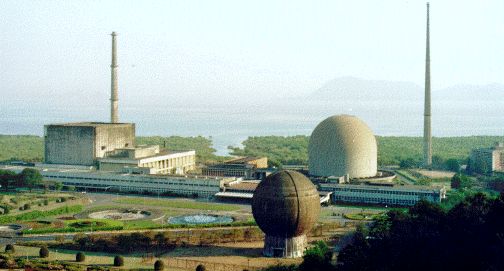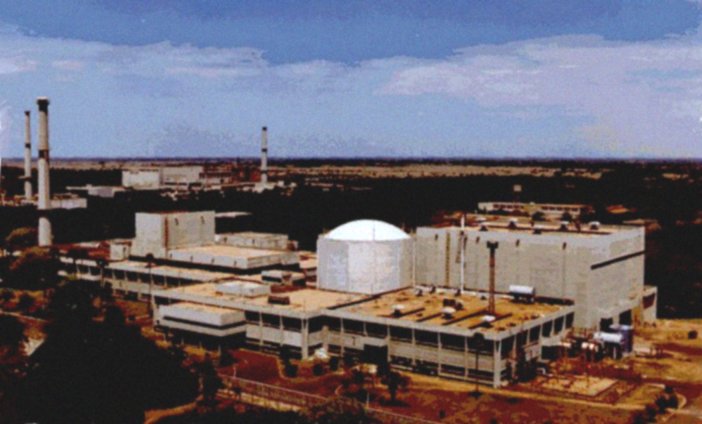The present Government of India is keen to sign an (123) Agreement
with the United States, for cooperation concerning uses of nuclear energy.
The United States own Federal law, the Section 123 of Atomic Energies Act 1954
prohibits the US government from signing a deal with a non – NNP signatory state.
The US Government, under George W Bush passed the Henry Hyde’s Act to exempt
the government from the mandatory requirements of the Atomic Energy Act 1954.
The original text of the deal, which has only recently (3 August) been disclosed
and the strict terms of the Henry Hyde’s Act has caused concerns
not only amongst politicians but also outside the Parliament,
notably amongst the nuclear scientists.

The much abused “Left” has raised the strongest objection.
The many voices that are raised in favour of this controversial deal.
wants to divert attention from what the “left” are saying about the deal,
to the “Left’s” ideology, or what decisions or steps they have taken in the past.
This is a deliberate attempt to divert focus from the concerns of the text of this deal.
I have not heard any of these voices discuss the history of America’s foreign policies.
They also try to imply that the “left front” only represents the state of West Bengal.
To be clear, the left front holds power in West Bengal and Kerela; they also have
support in Andhra Pradesh, Maharashtra, Punjab and Tamil Nadu and Tripura.
This is how the “Left” have expressed their worries ,
This agreement covers political, economic, military, and nuclear cooperation. This alliance entails not just nuclear cooperation but talks of the two countries promoting global democracy, revamping the Indian economy to facilitate large scale investment by the United States, and a strategic military collaboration.
The Left parties have, after carefully assessing the implications of the 123 agreement, demanded that the government should not proceed further to operationalise the agreement. The objections to the deal have been spelt out in detail in the statement issued by the Left parties. The Left is clear that going ahead with the agreement will bind India to the United States in a manner that will seriously impair an independent foreign policy and our strategic autonomy.
Instead what they have asked is
The best course would be for the government not to proceed further with the operationalising of the agreement. Till all the doubts are clarified and the implications of the Hyde Act evaluated, the government should not take the next steps with regard to negotiating the IAEA safeguards, which are to be in perpetuity, and proceed to get the guidelines from the Nuclear Suppliers Group.
This is a fair and reasonable request.
As Dr Subroto Roy has written,
What the Manmohan-Montek Planning Commission needed to do first of all was a thorough cost-benefit analysis of India’s energy requirements but such elementary professionalism has been sorely lacking among our economists for decades.
The answer to our present conundrum must be patience and the fullest transparency. What is the rush?
If it is good or bad for us to buy six or eight new American reactors now, it will remain good or bad to do so a year or two from now after everyone has had a thorough think about everything that is involved.
Only those with any vested interest will be rushing to seal the deal.
And please don’t anyone say computer simulations have replaced nuclear testing.
They are just simulations of ‘abstract’ model of any particular system being tested.
Nothing more. And are only as good as the computer program written for it.
If ever required in future, every nuclear weapon state will have to and will
conduct underground tests to verify and validate important parameters.
I believe this deal if it goes through,
it will have adverse effects only on Indians living in India.
Not the Indians living permanently abroad or has foreign nationality.
For when things go wrong, they have the option to shrug their shoulders
and walk away unlike the people living in India who will be
entrapped in America’s strategic designs in South Asia.
In future, before these voices are raised in favour of the deal,
they should declare
where they reside,
what nationality they hold
if they have any plans to return to live in India
if they aspire to obtain unlimited resident status or the coveted green card.
I am an Indian living in UK for 18 years,
but I have not changed my Indian nationality for a foreign passport.
I have every intention to return back to India when my job here is done.
I do not want to return to a country entangled in US’s designs in South Asia.
I do not care who asks these questions, be they the Left, the Right or the Center,
I want the deal to be put on hold, while those who understands can study the deal.
I will say, if you are arguing for the signing of this deal
but now are an American national or an Indian hoping for a green card,
you may not have the best interests of the common Indian at heart,
this is not your concern, not your problem, not your debate,
so just stay out of it.
![]() America
America![]() India
India![]() Hyde’s Act
Hyde’s Act![]() 123 Agreement
123 Agreement![]() fearmongering
fearmongering








